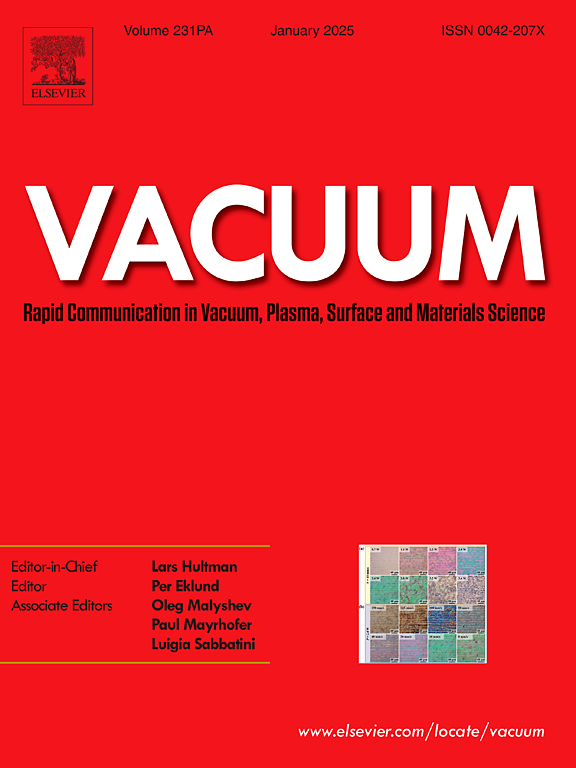Wear properties, corrosion behaviors, and TEM structures of CrSiN/CrSi multilayer coatings on oxynitriding-treated Unimax tool steel using the direct current magnetron sputtering system
IF 3.8
2区 材料科学
Q2 MATERIALS SCIENCE, MULTIDISCIPLINARY
引用次数: 0
Abstract
This study employed the direct current magnetron sputtering process of physical vapor deposition to deposit CrSiN and CrSiN/CrSi multilayer coatings onto Unimax tool steel post oxynitriding treatment. Experimental parameters included various deposition times (1.5, 2, 2.5, and 3 h), a gas flow rate of 45/30 (Ar/N2) sccm, a power of 100 W, a voltage of 400 V, a substrate bias of −50 V, and a deposition temperature of 250 °C. The results indicate that when deposited for 2.5 h, the CrSiN coatings exhibited a distinct columnar crystal structure and possessed the highest hardness (14.0 GPa) and elastic modulus (241 GPa). When the deposition times were 10 min for CrSi and 2 h and 20 min for CrSiN, the CrSiN/CrSi multilayer coatings demonstrated the best wear resistance (with a wear loss volume of 1.5 × 10⁻⁴ mm³ and a specific wear rate of 5.2 × 10⁻⁸ mm³·m⁻1 N⁻1 under a 5 N load) and strong corrosion resistance (with a corrosion current of 5.2 × 10⁻⁶ A·cm⁻2 and polarization resistance of 783 Ω cm2 in a 3 wt% NaCl solution). Transmission electron microscopy observations reveal that the CrSiN/CrSi multilayer coatings exhibited a stable CrN crystal structure alongside Si₃N₄ amorphous structures.
求助全文
约1分钟内获得全文
求助全文
来源期刊

Vacuum
工程技术-材料科学:综合
CiteScore
6.80
自引率
17.50%
发文量
0
审稿时长
34 days
期刊介绍:
Vacuum is an international rapid publications journal with a focus on short communication. All papers are peer-reviewed, with the review process for short communication geared towards very fast turnaround times. The journal also published full research papers, thematic issues and selected papers from leading conferences.
A report in Vacuum should represent a major advance in an area that involves a controlled environment at pressures of one atmosphere or below.
The scope of the journal includes:
1. Vacuum; original developments in vacuum pumping and instrumentation, vacuum measurement, vacuum gas dynamics, gas-surface interactions, surface treatment for UHV applications and low outgassing, vacuum melting, sintering, and vacuum metrology. Technology and solutions for large-scale facilities (e.g., particle accelerators and fusion devices). New instrumentation ( e.g., detectors and electron microscopes).
2. Plasma science; advances in PVD, CVD, plasma-assisted CVD, ion sources, deposition processes and analysis.
3. Surface science; surface engineering, surface chemistry, surface analysis, crystal growth, ion-surface interactions and etching, nanometer-scale processing, surface modification.
4. Materials science; novel functional or structural materials. Metals, ceramics, and polymers. Experiments, simulations, and modelling for understanding structure-property relationships. Thin films and coatings. Nanostructures and ion implantation.
 求助内容:
求助内容: 应助结果提醒方式:
应助结果提醒方式:


